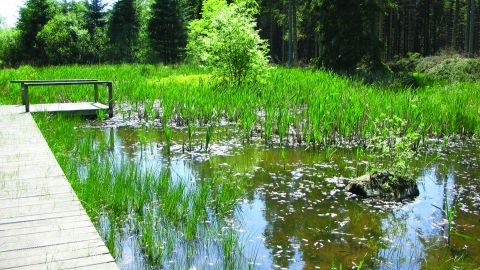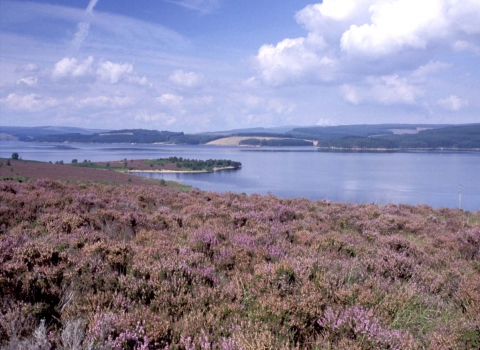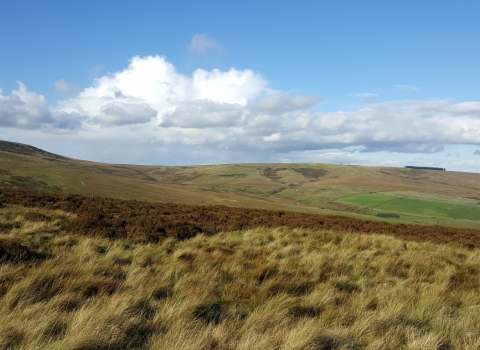Location
Know before you go
Dogs
When to visit
Opening times
24/7/365Best time to visit
All year roundAbout the reserve
The reserve, created when Kielder dam was constructed in 1979, wraps around the northern edges of Kielder Water and includes open water, wetland, woodland and grassland habitats. Bakethin is also one of the Northumbrian Water Environmental Partnership sites.
Wildfowl are best viewed during the winter months. Visitors include pochard, tufted duck, goldeneye, goosander, mallard and teal. Early and late in the year there are sightings of whooper swans and barnacle geese en-route to or from the Arctic. In the late winter crossbill can often be seen and heard singing in the treetops as they begin courtship. In spring the reserve can give views of osprey and goshawk during their courtship, with the viaduct (which is owned by Northumberland and Newcastle Society) offering an excellent vantage point. If you’re lucky, you may also spot an otter hunting along the shoreline. The shallow water margins also offer valuable spawning grounds for the common frog and palmate newt and there is a healthy fish population including trout, minnow, eels and stone loach. Adder and common lizard are regularly recorded and the three ponds provide excellent habitat for amphibians and dragonflies.
The woodlands are being sensitively managed to encourage new native woodland extension beyond the reservoir shores. The three ponds are also regularly maintained to retain open water areas. There is a dipping platform at the pond near the viaduct and the Capon Pond on the Lakeside Way has a small boardwalk/viewing area.
An accessible wildlife viewing hide, situated about ½ a mile along the Lakeside Way on the South Shore, was officially opened in July 2017. Bakethin Hide, designed and built by students from Newcastle University, offers a wonderful opportunity to view the reserve’s wildlife from a unique and attractive waterside viewpoint with dual vantage points across the water and into the forest. The design draws on themes from the existing architecture and artwork around Kielder including the darkened, charcoal colour of the building’s façade. The project is a fantastic addition to the reserve and is testament to the ongoing strong partnership investment from Heritage Lottery Fund, Kielder Water & Forest Park Development Trust, Newcastle University, Northumberland Wildlife Trust, Northumbrian Water, Arts Council England, Forestry Commission, Environment Agency and Northumberland National Park. A wildlife themed bench, created by prize-winning chainsaw carver Tommy Craggs, was created during 2017 and can be found on the Lakeside Way near Bakethin Hide.
A new, family friendly, clearing has been created nearby to encourage visitors to explore the reserve further. What can you find?
If you would like to find out more about Kielder, go to the Visit Kielder website here.
Learn more about the Northumberland Wildlife Trust and Northumbrian Water Environmental Partnership here.
Kielder Viaduct is owned and maintained by Northumberland and Newcastle Society, more information about can be found on their website.



